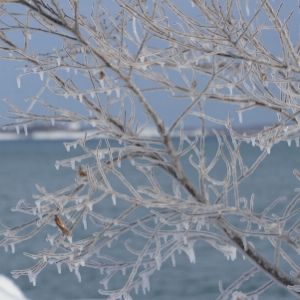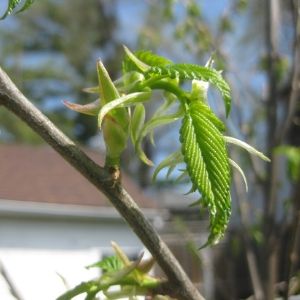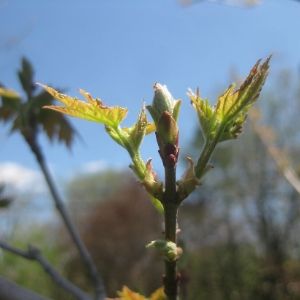
Contrary to popular be-LEAF, tree buds, which are underdeveloped leaves, actually start to form the previous year and lie dormant over the winter. In order to survive these cold temperatures, most buds are covered with scales which act as a protective layer. In the spring, these scales are prompted by climatic signals and drop off during a process called bud burst. Favourable climatic conditions, such as experiencing a certain number of days with cold temperatures followed by an adequate number of days with warm temperatures, allow trees to properly grow and avoid damage from late frosts. Until these exact favourable conditions are present, the tree’s buds will remain in a dormant state.
The timing of bud burst varies according to a number of factors including year, weather patterns, microclimates, species and individual trees. Interestingly, this timing can even vary within individual branches on one tree! Tree buds on maples and birches are more apt to burst earlier in the season whereas oak buds tend to burst later to protect against sudden drops in temperature. Furthermore, newly planted trees often take a little longer to leaf out in the spring because they have experienced some transplant stress and tend to focus a lot of their energy on their roots in the first few years after planting.

There is no set date for bud burst on trees, but we can use environmental clues to predict when trees will leaf out year to year. Ultimately, trees are in tune with their physiological processes and can sense temperature changes, which help wake them up in the spring!
If you'd like to plant native trees and shrubs on your property, we provide subsidized planting programs for homes, multi-units and commercial properties. Our certified arborists consult with you to select the right tree for the right place and provide you with the tools to care for the tree as it grows and establishes itself! Learn more about our programs.
Natasha Keshavjee is an ISA certified arborist and the Residential Planting Programs Operations Supervisor at LEAF.
The Backyard Tree Planting Program is supported by the City of Toronto, the Regional Municipality of York, the City of Markham, the Town of Newmarket, the Town of Ajax and Ontario Power Generation.
